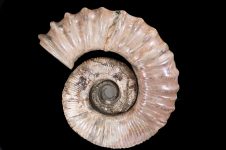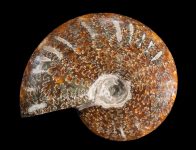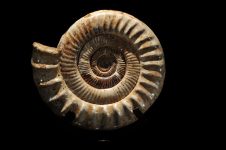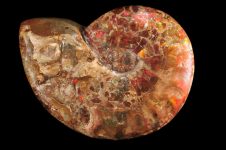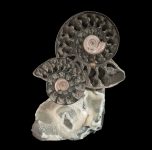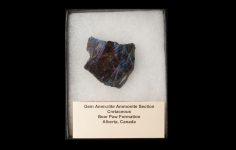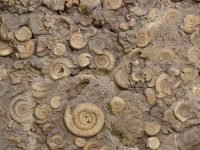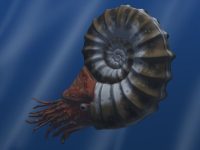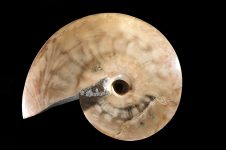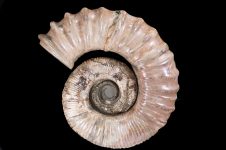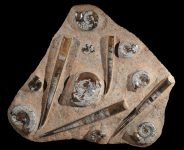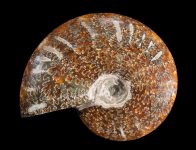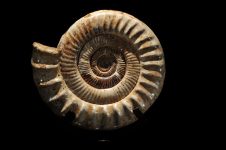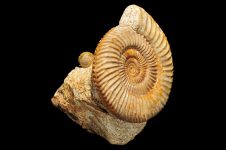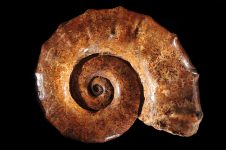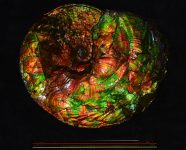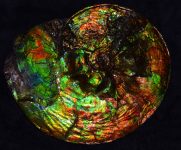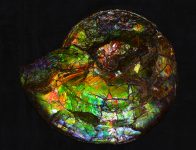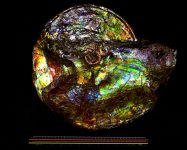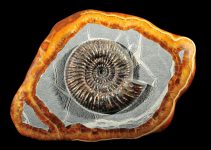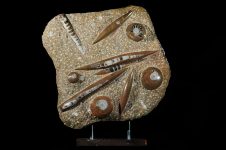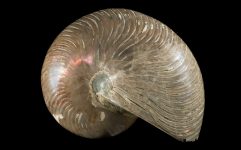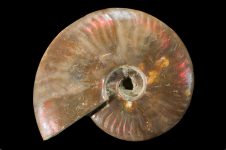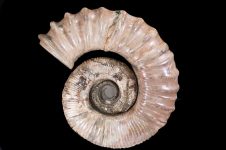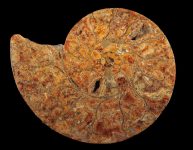Ammonite
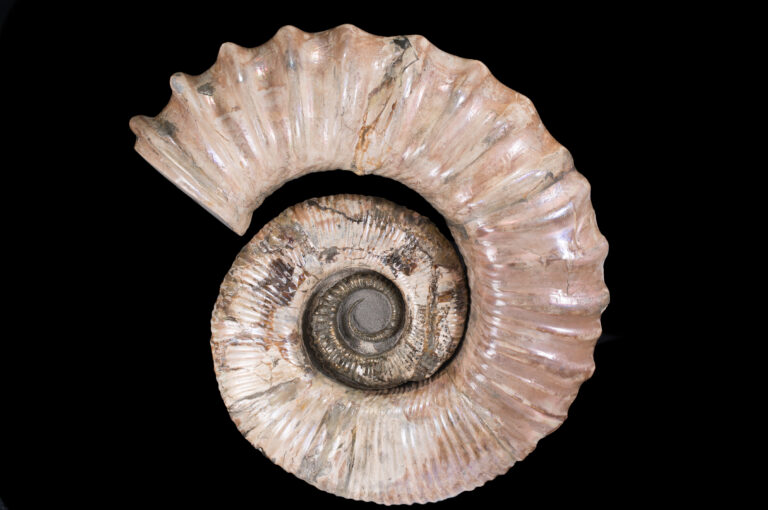
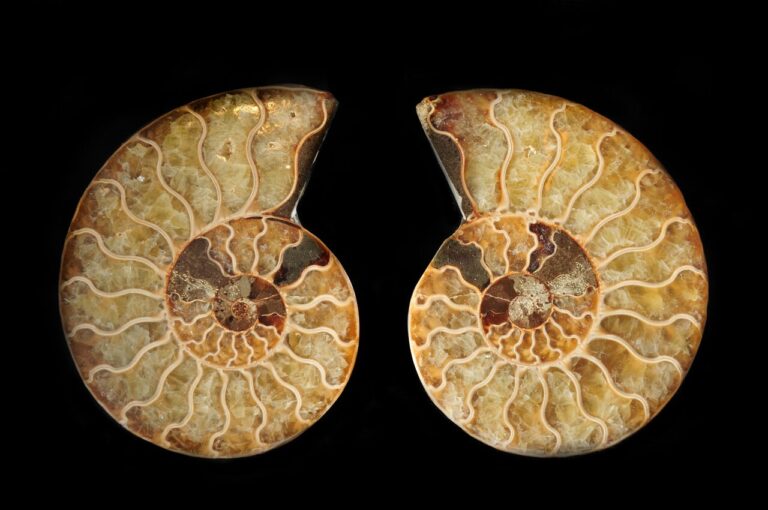
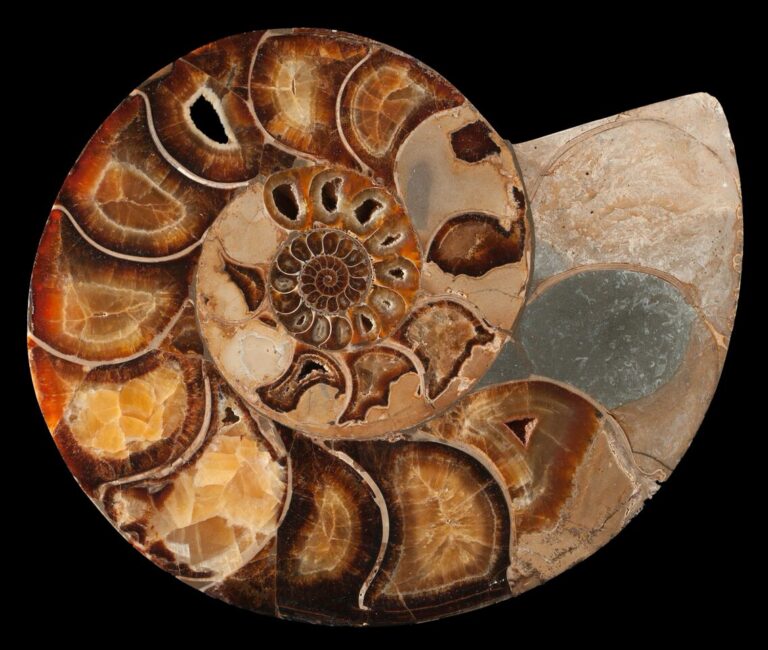
Ammonite
Ammonites are extinct marine mollusks belonging to the class Cephalopoda and the subclass Ammonoidea. These fascinating creatures thrived in Earth’s oceans for millions of years, from the Devonian period approximately 400 million years ago, to their extinction at the end of the Cretaceous period around 66 million years ago. Known for their spiral-shaped shells and diverse forms, ammonites are prized by paleontologists and collectors alike for their beauty, scientific value, and role in understanding ancient marine ecosystems. In this exploration, we delve into the anatomy, evolution, habitat, diversity, extinction, and cultural significance of ammonites.
ANATOMY AND SHELL STRUCTURE
Ammonites possessed distinctive coiled shells that resemble tightly wound spirals. These shells were composed primarily of aragonite, a form of calcium carbonate, which allowed them to grow and maintain their structure in marine environments. The shell’s intricate chambers served multiple purposes: providing buoyancy, regulating water and gas exchange, and housing the animal’s soft body. As ammonites grew, they added new chambers to their shells in a logarithmic spiral, creating visible sutures where the walls of these chambers met. The complexity and ornamentation of these sutures vary among different species, serving as key identifiers for taxonomic classification and evolutionary studies.
EVOLUTIONARY HISTORY
The evolutionary history of ammonites dates back to the early Devonian period, approximately 400 million years ago, when they first appeared in Earth’s oceans. Over millions of years, ammonites diversified into a wide array of forms, adapting to various marine environments and ecological niches. They reached their peak diversity and abundance during the Mesozoic era, particularly during the Jurassic and Cretaceous periods, when they inhabited oceans worldwide. Ammonites coexisted with and evolved alongside other marine organisms, contributing to the rich biodiversity of ancient seas.
HABITAT AND DISTRIBUTION
Ammonites were highly successful marine organisms that inhabited a wide range of oceanic environments, from shallow coastal waters to deep-sea habitats. Fossil evidence indicates their presence in virtually every continent, reflecting their global distribution and adaptability to different marine conditions. Some species of ammonites were adapted to specific environments, such as nearshore reefs or open ocean waters, where they played important ecological roles as predators, scavengers, or prey for other marine organisms.
DIVERSITY AND CLASSIFICATION
Ammonites exhibited remarkable diversity in their morphology, ranging from small, tightly coiled forms to large, elaborately ornamented shells. Paleontologists have identified thousands of species based on variations in shell shape, size, ornamentation, and suture patterns. These variations reflect adaptations to different habitats, feeding strategies, and evolutionary pressures over millions of years. The classification of ammonites is primarily based on shell characteristics, including the shape of the shell, the complexity of sutures, and the presence of ornamentation such as ribs, spines, or tubercles.
FEEDING AND BEHAVIOR
As cephalopods, ammonites were active predators equipped with tentacles and a beak-like mouth for capturing and consuming prey. They possessed well-developed eyes and a complex nervous system, enabling them to detect and pursue their prey in various marine environments. Some species of ammonites are believed to have been opportunistic feeders, scavenging on organic matter and detritus, while others were active predators that hunted small marine organisms such as fish, crustaceans, and other mollusks. Their diverse feeding strategies and adaptations contributed to their ecological success and longevity in ancient oceans.
EXTINCTION
The extinction of ammonites at the end of the Cretaceous period, approximately 66 million years ago, coincided with a mass extinction event that also marked the demise of dinosaurs and numerous other marine and terrestrial species. The exact cause of their extinction remains a subject of scientific debate, with several hypotheses proposed:
Climate Change: Fluctuations in global climate and sea levels during the late Cretaceous period may have disrupted marine ecosystems and affected the availability of food and habitat for ammonites.
Oceanic Anoxia: Periods of widespread oceanic anoxia, where oxygen levels in marine waters were depleted, could have negatively impacted the survival of ammonites and other marine organisms dependent on oxygen-rich environments.
Impact Event: The impact of a large asteroid or comet is considered a plausible cause of the Cretaceous-Paleogene extinction event. The resulting environmental disturbances, such as tsunamis, wildfires, and global climate cooling, could have had catastrophic effects on marine ecosystems and led to the extinction of ammonites.
Volcanic Activity: Intense volcanic eruptions, such as those associated with the Deccan Traps in India, may have released large amounts of greenhouse gases and aerosols into the atmosphere, contributing to global climate instability and environmental stress on marine organisms.
CULTURAL SIGNIFICANCE AND SCIENTIFIC CONTRIBUTIONS
Ammonites hold significant cultural and scientific importance as fossils and symbols of Earth’s ancient history. Throughout human history, these spiral-shaped shells have fascinated people across cultures and civilizations, inspiring myths, artwork, and scientific curiosity. In paleontology, the study of ammonite fossils has provided valuable insights into evolutionary processes, paleoenvironmental conditions, and the interconnectedness of life in ancient seas. Fossilized remains of ammonites serve as key indicators for dating and correlating rock layers, aiding in the reconstruction of past environments and geological history.



